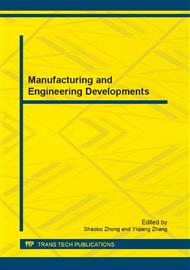p.805
p.810
p.815
p.820
p.826
p.831
p.835
p.840
p.845
Biomechanical Analysis of Cervical Finite Element Model
Abstract:
The finite element method is often used in the field of biomechanical analysis. It can study the mechanical response of the internal organization without any experiments on the human body. The paper studies the biomechanics of the cervical spine by the method of finite element analysis. Firstly, the finite element model of the cervical spine including cervical vertebrae and soft tissue is constructed. Secondly, biomechanical analysis of cervical finite element model which is validated to be reasonable and reliable is completed. The results of the control group, the anterior cervical decompression and fusion surgery group, and the artificial cervical disc replacement surgery group are obtained to study the motion degree and ligament force of cervical spine. Thirdly, the summary of the biomechanical analysis of cervical finite element model is concluded.
Info:
Periodical:
Pages:
845-850
Citation:
Online since:
January 2013
Authors:
Price:
Сopyright:
© 2013 Trans Tech Publications Ltd. All Rights Reserved
Share:
Citation:


